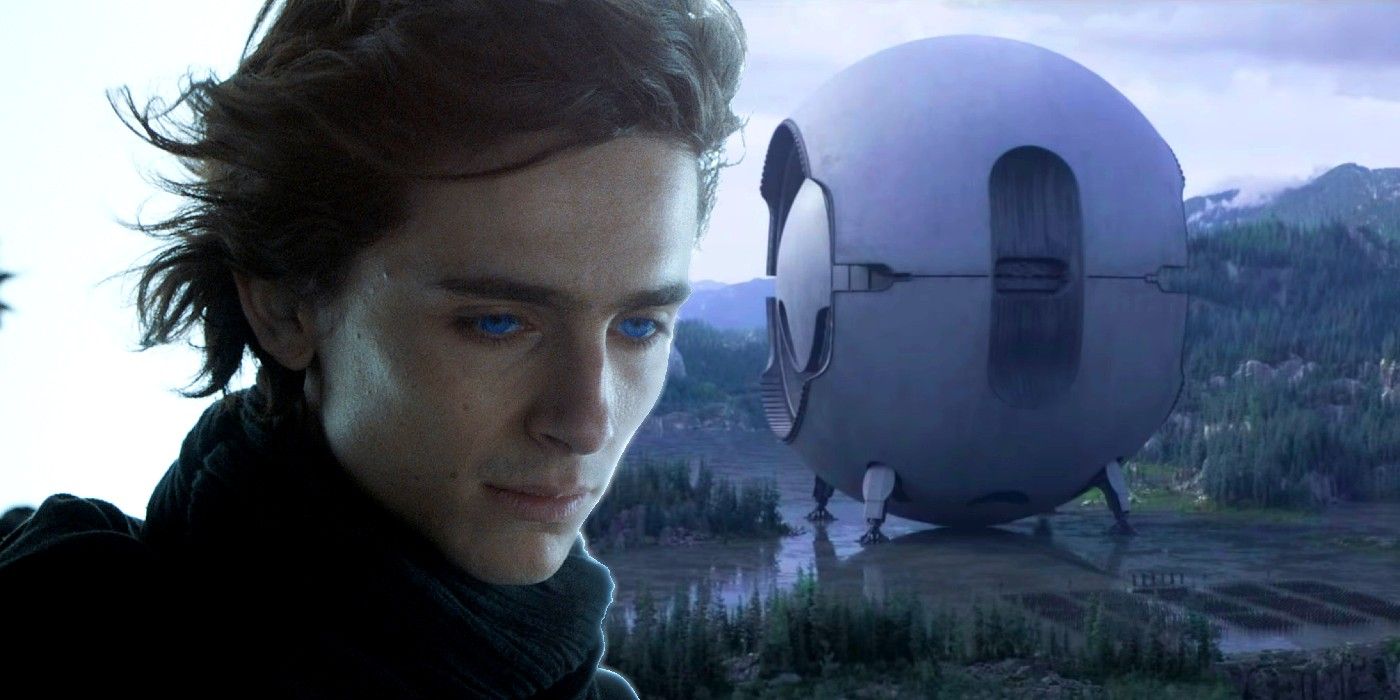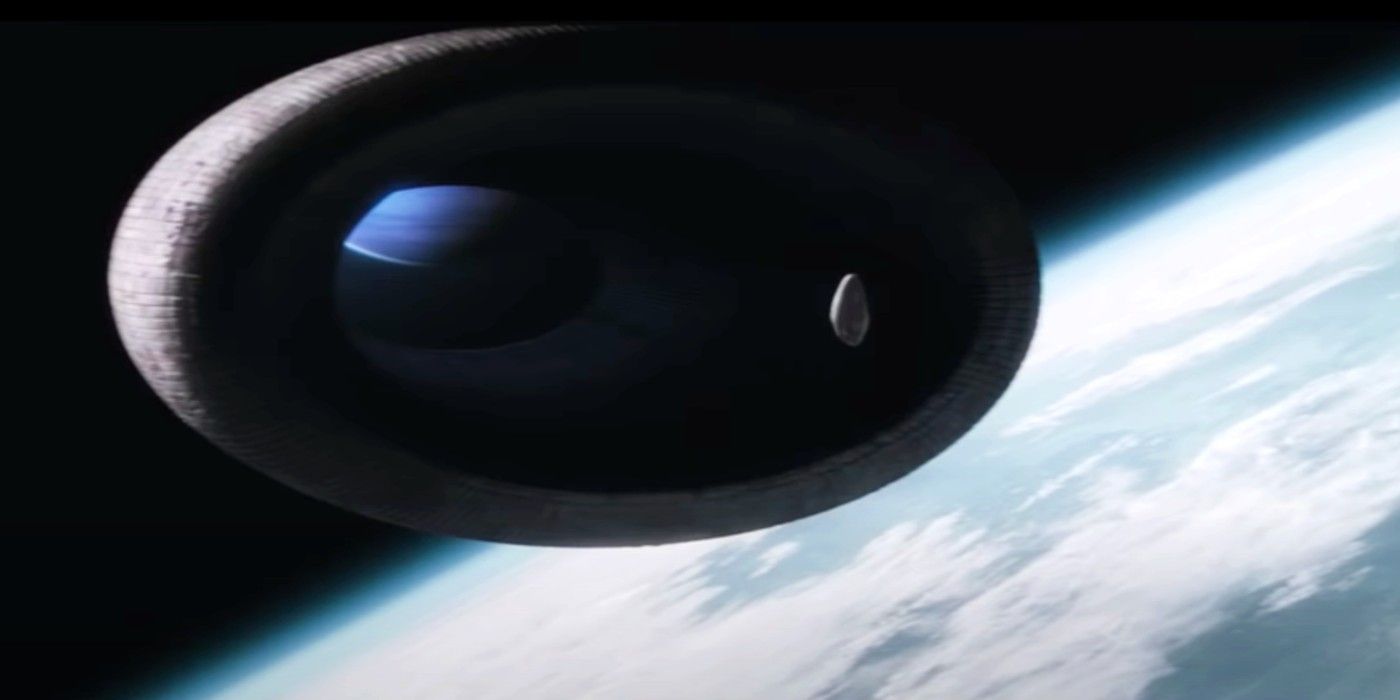
Denis Villeneuve has brought Frank Herbert’s Dune universe to life in spectacular fashion, showing off a sci-fi future that might not actually be as unrealistic as it seems. Herbert’s world trades heavily in prophecy and the supernatural as well as in spaceships and advanced technology, creating a future that feels both scientifically advanced and inescapably fantastical. Obviously, not everything in Dune is feasible within the bounds of what humans currently know about the universe, but some parts of the sci-fi universe may be well within the realm of eventual possibility.
The story of Dune starts in the year 10,191 A.G. (After Guild). The creation of the Spacing Guild—which is what leads to the establishment of a new galactic calendar in the Dune timeline—takes place about 10,000 years in the future. That sets the events of the film around the year 22,000 A.D., or roughly 20,000 years beyond the real world. The massive time jump comes with a slew of futuristic developments, ranging from interstellar travel and personal energy shields to new levels of awakened human consciousness.
Because Dune is set so far in the future, it’s impossible to gauge the realism of its sci-fi universe with perfect accuracy. However, Herbert tried to ground most of his story in some level of real science, and there are plenty of existing theories of what’s hypothetically possible for humans to achieve in terms of science and technology. Here’s how realistic Dune’s story and sci-fi world actually is.

In terms of its future tech, Dune is pretty similar to many other stalwarts in the sci-fi genre. That’s largely because Dune created or popularized many of the tropes that have come to dominate the genre in the decades since. There are spaceships of various sizes, planetary-bound craft of advanced speed and mobility, laser guns (though rarely used), energy shields, and all manner of levitating chairs, lamps, and other mundane objects. In the books, most of the futuristic technology in Dune is explained through a scientific principle called the Holtzman Effect – a relatively vague theory of the relationships between subatomic particles. The Holtzman effect is used in the Dune book franchise to justify how all the suspenser tech works, which causes all the floating objects to function as they do. It’s also the basis of the personal body shields that deflect high-velocity attacks but are susceptible to slow-moving objects.
Because the Holtzman Effect is not a real scientific principle, and because it’s pretty loosely defined in Herbert’s own books, it’s tough to say how realistic the technology created by it actually is. However, much of the rest of Dune’s tech—such as the ornithopters, the stillsuits’ water recycling, the desert survival equipment of the Fremen, and most of the weapons used by Dune’s House Atreides and House Harkonnen—are all pretty firmly within the realm of possibility, given a few thousand years of scientific advancement. Because all supercomputers and advanced AI were wiped out by humanity prior to the events of Dune, most of the day-to-day technology seen in the movie is relatively realistic by science-fiction standards. And even some of the more rudimentary tech caused by the Holtzman Effect, like the body shields and the suspensor lamps, are probably feasible given the exponential rise in scientific advancement humanity has seen over the past several decades.

Like many science fiction franchises, Dune employs a form of faster-than-light travel to transport its characters from one corner of the galaxy to the other. Dune is similar to Star Wars in the effect of its space travel, but it differs notably from George Lucas’ universe in its methods. As described in both Herbert’s novel and Villeneuve’s movie, the Spacing Guild of Dune utilizes the Holtzman Effect to “fold” space-time, allowing great galactic distances to be traversed in nearly no time at all because of the compression. A safe course of travel is then plotted through this folded space-time by the Guild Navigators; humans who are fully immersed in tanks of Melange gas and inundated with heavy doses of the spice in order to achieve a high level of prescience. As a result of their severe spice usage, Guild Navigators mutate into hideously deformed creatures, barely resembling their former human state.
The spice-related portion of Dune’s space travel is obviously unrealistic because it relies on a fictional drug that induces supernatural future-sight. The idea of folding space-time, however, could be seen as feasible within the contemporary theories of general and special relativity. Space-time distortion is a real, observable phenomenon, and within the ideas posited by Einstein and his successors, a forced compression of time and space to make interstellar travel quicker is theoretically possible. The operative word there is theoretical, however, as such leaps forward in science are still purely speculative and highly debated.

In addition to the various pieces of sci-fi technology present in Dune, there’s another layer of futurism in the more spiritual and supernatural elements of the story. Paul’s dreams and visions in Dune are the most prominent manifestation of this in Villeneuve’s film, but there are many other instances of superhuman abilities explored in detail in Herbert’s original novel. In Dune, some humans are able to read virtually imperceptible changes in emotion and control others with just their voice, while others possess logical and mathematical capabilities equal to those of advanced computers. These superior powers are primarily explained by advanced training that starts at birth and a general evolution of humanity as a species – both of which make the advanced abilities displayed in Dune at least somewhat believable.
Given thousands and thousands of years of carefully cultivated human evolution, it’s not out of the question to think that enhanced perception and mental capabilities could arise, as they do in Dune character groups like the Mentats and the Bene Gesserits. Paul’s future-sight, however, is a bit less plausible. His powers are tied to the spice—again, an entirely fictional substance—as well as to larger prophecies that aren’t fully explained within the story of Dune. However, there are some real-world theories that the use of naturally occurring psychedelic substances, like magic mushrooms, played a big part in the development of the human brain in earlier subspecies. Because so much of the human mind is believed to be untapped, there is some unknown space for Dune to play with in terms of plausibility.

Perhaps the most immediately realistic aspect of Dune’s future is the general organization of its universe. There are no sentient aliens in Herbert’s world, and the political structure of the galaxy is almost medieval in its stark simplicity. The Dune Imperium is ruled by an Emperor, who wields supreme power over the universe. That power is divided up further among the great houses—longstanding families entrusted with regional control and relatively high levels of independence from the core Imperium. There are also notable religious factions like the Bene Gesserits, who occupy similar roles to clergy in the real world. The role of spice also parallels that of Earth's own most valuable commodities, such as oil or rare minerals necessary for technology, which, like spice, are frequently fought over. Overall, Dune is a story more interested in patterns of human behaviors than in larger questions of technological impact, which is why Herbert kept the social and political aspects of his universe very close in structure to modern-day Earth.
from ScreenRant - Feed https://ift.tt/3pBu7RL

0 Comments